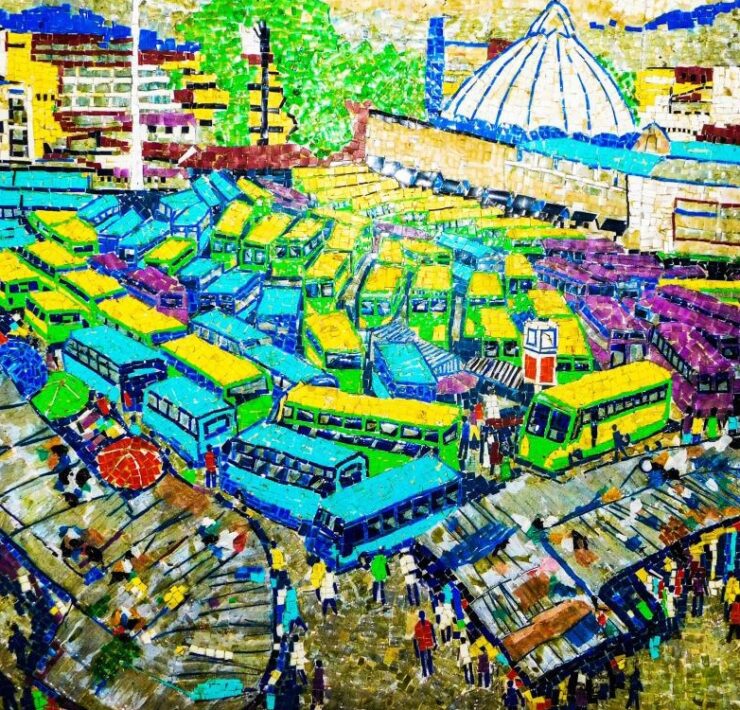Creativity

Abel Merawi is from Addis Ababa. He is an English…
Originally published on the author’s website on September 2020
Let me indulge you in the life of an imaginary writer. She is sitting in a room filled with the sound of silence. In solitude, she struggles with her inner world, seemingly lost to the outside world. In this state of being, there is transcendence of immediate reality in a struggle to create the future. She is oblivious to the daily struggles of everyday people. As the rest of us remain victims of circumstances, this writer is fighting the noble war for humanity. Her pen and paper work in unison to create order out of chaos. Do not be mistaken by assuming she has neglected life; it is rather her seriousness that leads her to this path. The road she travels is one filled with the unknown, but it is this very road that re-creates and re-shapes the world. She is gripped by anxiety since every word she imprints on paper creates new possibilities. There is hesitation and long pauses whenever she feels the weight of uncertainty. Yet, she pursues her vision by humbly accepting the possibility of being wrong. The struggle is utterly personal, but the result is universal. Every visionary and creative person from every walk of life, throughout history, is manifested in our imaginary writer.
Creativity is more of an experience than an object to be defined. In defining it we tend to limit it. Consider the love of a mother to a child. This love is to be experienced in every little gesture and act of the mother. The philosopher of ethics may toil to put a definition on this kind of love, but in the process limits and distorts it. The same goes with creativity, which is more of an experience than a definition. Thus, we will proceed by showing the features of creativity rather than its definition. Let us begin by relating creativity with courage.
As the famous adage goes, courage is not the absence of fear but the will to continue despite it. So what is creative courage? Rollo May in his work ‘The Courage to Create’ provides us with the following remark. He contends that creative courage is, “the discovering of new forms, new symbols, new patterns on which a new society can be built.” Let us expound on this concept for a moment. What the creative person or the artist does is, fundamentally, discovering new possibilities. The word discovering is more fitting in this context than creating because it is not something completely new that the artist brings to life. It is a discovery because the thing created is a new way of understanding the world. We perceive the world subjectively and collectively through ‘forms, symbols and patterns’ and this is the actual work of the artist. The external world is chaotic indeed, and it is the task of the creative to fashion them in a new pattern. It is a rearrangement of the old pattern, which gives birth to a fresh perspective.
This is the audacious task the creatives take upon themselves. So why do they do it? I believe that they attain the highest form of job from it. Rollo May further argues, “Whatever sphere we may be in, there is a profound joy in the realization that we are helping to form the structure of the new world.” Firstly, creativity is not given only for the artists; every profession needs an artist if it is to develop rather than merely grow in proportion. Every genuine progress in the economic, political and social life of people is attributed to the work on the creatives.
It is usual to find people who perceive artists as carefree and misfits of society. When we imagine an artist, the picture of a rugged looking and isolated individual, who has stopped caring about the real world often comes to mind. This misunderstanding is born when we disregard the anxiety and burden of the artist. The task of creation is too heavy for such people to engage in the common buffoonery of the rest of us. The creative is confronted with profound anxiety and fear that emanates from breaking down previous realities and creating new ones. Rollo May argues that the anxiety comes when creativity ‘broke down my previous hypothesis’ and ‘shook my self-world relationship’. He goes on to say, “At such a time I find myself having to seek a new foundation, the existence of which I as yet don’t know.” In the end, this anxiety gives birth to a profound joy when the work is complete and becomes part of reality.
In the creative process, the balance between solitude and solidarity should be maintained. The artist must seek solitude and a moment of pause for reflection. This solitary existence is not hatred of social life but absolute love of humanity. In the life of every religious prophet, we see the prophet deserting the people and temporarily leading a life of a hermit. This time is dedicated for meditation and holistic comprehension of reality. It is only with this transcendental vision that the prophet returns to the people and quench their thirst for wisdom. The same is the reality of scientists, writers, painters and all sorts of creative people. From there solitary comes a new understanding that shakes the foundation of the old.
When the old system is questioned by the new reality presented by the creative, it is common for institutional people to become their foe. Rollo May expressed it eloquently in stating, “Just as the poet is a menace to conformity, he is also a constant threat to political dictators. He is always on the verge of blowing up the assembly line of political power.” It is no wonder that the artists are always susceptible to harassment and persecution by any tyrant and dictator in the world. The artist exposes their propaganda and create alternative realities. But we need this people if our society is to develop and uplift itself.
Most systems require conformists and collective followers. This is accomplished in our modern world as most people dread isolation. People want to be a part of something and will deny their belief to gain acceptance of the populace. They fear thinking, which is the fundamental element of our species. Blaise Pascal in his book ‘Human Happiness’ argues, “I can certainly imagine a man without hands, feet … But I cannot imagine a man without thought; he would be a stone or an animal.” Truly, to abandon individuality is to abandon the human element.
As a final thought I contend that the creative is also the rebel, and it is the rebel who becomes the savior of humanity. Rollo May argues, “Recall how often in human history the saint and the rebel have been the same person. Socrates was a rebel, and he was sentenced to drink hemlock. Jesus was a rebel, and he was crucified for it.” But the fear of death is minor in the visionary and creative. Death is a fact of life and fear of it should not keep us from living a worth life. In the process of creation, the artist transcends and triumphs over death. As the poet Dylan Thomas puts it:
“Do not go gentle into that good night,
Rage, rage against the dying of the light.”
What's Your Reaction?
Abel Merawi is from Addis Ababa. He is an English literature teacher, freelance writer/reporter for Ezega.com and an Amharic-English translator and editor. He also writes for www.msingiafrikamagazine.com. You can reach him via: abelmerawi4@gmail.com

















